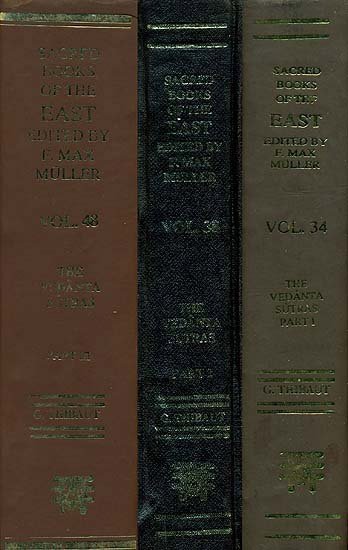Brahma Sutras (Ramanuja)
by George Thibaut | 1904 | 275,953 words | ISBN-10: 8120801350 | ISBN-13: 9788120801356
The English translation of the Brahma Sutras (also, Vedanta Sutras) with commentary by Ramanuja (known as the Sri Bhasya). The Brahmasutra expounds the essential philosophy of the Upanishads which, primarily revolving around the knowledge of Brahman and Atman, represents the foundation of Vedanta. Ramanjua’s interpretation of these sutras from a V...
Sutra 3.3.4
4. Scripture also declares this.
Scripture also shows that (identical) meditation is what all the Vedānta-texts intimate. The Chāndogya (VIII, 1, 1 ff.) declares that that which is within the small space in the heart is to be enquired into, and then in reply to the question what the thing to be enquired into is, says that it is the highest Self possessing the eight attributes, freedom from all evil and the rest, which is to be meditated upon within the heart. And then the Taittiriya-text, referring to this declaration in the Chāndogya, says, 'Therein is a small space, free from all grief; what is within that is to be meditated upon' (Mahānār. Up. X, 23), and thus likewise enjoins meditation on the highest Self possessing the eight qualities. And this is possible only if, owing to unity of vidya, the qualities mentioned in the first text are included also in the meditation enjoined in the second text.—Having thus established the unity of meditations, the Sūtras proceed to state the practical effect of such unity.
